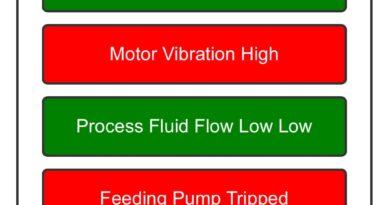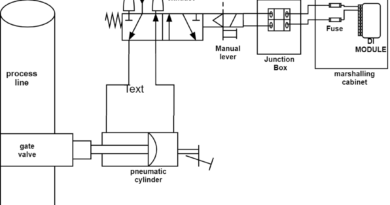Coal Feeder
Coal feeder are mostly used in thermal power plants as coal is the main source of fuel for the combustion process. And in order to control the combustion correct amount of coal need to feed into the boiler to keep the process under control. As you see in the diagram feeder lies between the bunker and the crusher or coal mill. The coal is usually stored in the bunker before feeding, and the flow of coal is controlled by a gate valve.
After coal is fed into the feeder it passes through the conveyor belt and enters the coal mill where it gets converted into a fine particle, mixed with an equal quantity of air, and finally used for combustion inside the furnace.

The list of major equipment used in the feeder for safe and reliable operation is mentioned bellow
- Flow controller
- Speed sensor
- Load cells
- On/off valves
- Coal presence switch
- Zero speed switch
- Belt Swayed switch
- Bunker discharge blocked switch
- Feeder discharge blocked switch
It is one of the main components of the feeder as it gathers all information required for controlling the coal flow. There are two methods of feeding available 1. Gravimetric 2. Volumetric feeding. In most, plant gravimetric type feeding is used as it’s the most accurate measurement technique. As it uses the signal of the load cell to measure the coal weight the measurement will never deviate from density changes. But in the volumetric method of measuring the density impacts the accuracy of coal being fed to the source.
Coal Feeder Flow Controller
It is the brain of the coal feeder as it continuously monitors the parameter to regulate the coal flow and safety shut down the system in case of disturbance in the process. As you saw in the diagram the controller gets all input signal and process and send the final control output to the motor to increase or decrease the speed. Commonly two load cells are used, in case there is more deviation in the load cell value then the controller can’t able decide the control output. In such a case, the controller will switch to volumetric feeding using the speed signal.
And the controller is also programmed to safely start and stop the feeder based on the logic design. For example, the feeder will not start until the coal feeder runs and it will not until it senses open to feedback from the discharge gate. Similarly, it will stop the feeder in case of temperature rise above the setpoint, the belt got swayed over the time limit, etc.
Speed Sensor
Speed is one of the main parameters that need to be measured to control the motor rotation by varying its frequency through the VFD. Proximity sensors or magnetic types are mostly used in industry as it’s non-contact and easy for maintenance and troubleshooting purposes. Encoder can also be used but we need to attach it along with the motor shaft, so mostly noncontact-type sensors are used.
Load Cell
The load cell is mounted on any one of the rollers on both sides. And as coal begins to flow the resistance of the load cell varies these differences in ohms value are converted into the weight of coal. On this raw data, the controller adjusted the belt speed as per the weight and density.
On/Off Valves
These valves are used to safely open and isolate the process line. As you saw in the above diagram we have used pneumatic and motorized valves. The seal airline is equipped with a pneumatic valve by the means of a solenoid valve the actuator opens/closes. The inlet and outlet gate are operated by the motorized valve, we will get some smart features like travel percentage indication, fault alarm, feedback, etc.
Coal Feeder Sensors
- As the coal feeder body is fully closed we can’t able to visualize the presence of coal in the belt. The Coal Presence Sensor consists of a flapper which will be acted by the coal moving thus closing the switch to get a healthy indication. In case of no coal on the belt is detected flapper will get released opening the circuit to trip or alarm.
- In case the belt got tare the motor will keep on running to stop the motor immediately the zero speed senses the varying speed and trip the feeder.
- The Blockage sensor help to avoid coal being dumped on the feeder due to any choke or not operating off the gate valve in the feeder.
- Belt sway sensor help to indicate if there is any deviation in a belt from the roller.
- Temperature transmitters like RTD are most commonly used to monitor the temperature of the feeder.
- Level Transmitters help to know the level of coal being stored for future use.
Air Blaster SOV
In case the bunker Blockage switch acts the solenoid valve gets direct command through the sensor to open the valve to Blast the air inside the bunker to clear the choke. And also equipment like vibrators are used combined with this setup for effective choke clearance.
These are some of the basic equipment used in coal feeders. And the protection equipment slightly varies for different manufacturers. Hope now you got a clear understanding of the coal feeder structure, post your feedback in the comment section.


